
-
Find the right food for your petTake this quiz to see which food may be the best for your furry friend.Find the right food for your petTake this quiz to see which food may be the best for your furry friend.Featured products
 Adult Light Small Paws with Chicken Meal & Barley Dog Food
Adult Light Small Paws with Chicken Meal & Barley Dog FoodLow calories for less active small & mini dogs
Shop Now Adult Perfect Digestion Salmon, Whole Oats, and Brown Rice Recipe Dog Food
Adult Perfect Digestion Salmon, Whole Oats, and Brown Rice Recipe Dog FoodScience Diet's breakthrough nutrition supports ultimate digestive well-being & healthy microbiome
Shop Now Hill's Science Diet Adult Oral Care Chicken, Brown Rice & Barley Recipe Dog Food
Hill's Science Diet Adult Oral Care Chicken, Brown Rice & Barley Recipe Dog FoodClinically proven kibble technology to reduce plaque & tartar build-up
Shop NowFeatured products Adult 7+ Chicken Recipe cat food
Adult 7+ Chicken Recipe cat foodSupports energy level and beautiful fur in mature cats
Shop Now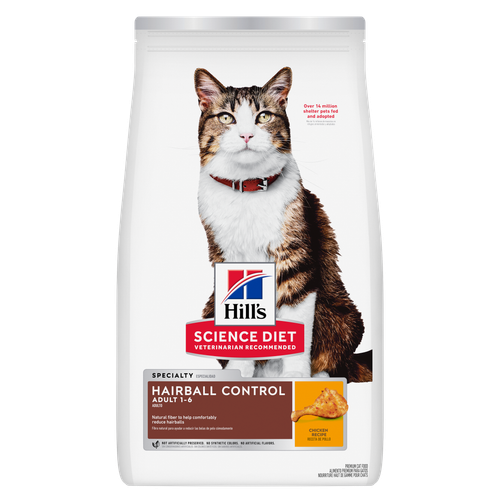 Adult Hairball Control Chicken Recipe Cat Food
Adult Hairball Control Chicken Recipe Cat FoodNatural fiber to help comfortably reduce hairballs
Shop Now Adult Perfect Weight Chicken Recipe Dog Food
Adult Perfect Weight Chicken Recipe Dog FoodOver 70% of dogs lost weight within 10 weeks when fed this nutrition (USA Study)
Shop Now -
Dog
- Dog Tips & Articles
-
Health Category
- Weight
- Food & Environmental Sensitivities
- Urinary
- Digestive
- Joint
- Kidney
-
Life Stage
- Puppy Nutrition
- Adult Nutrition
- Senior Nutrition
Cat- Cat Tips & Articles
-
Health Category
- Weight
- Skin & Food Sensitivities
- Urinary
- Digestive
- Kidney
-
Life Stage
- Kitten Nutrition
- Adult Nutrition
Featured articles How to Reduce Your Pet's Carbon Paw Print
How to Reduce Your Pet's Carbon Paw PrintHeaded outside? How you and your pets engage with nature can affect the environment, so here are some quick tips for reducing your pet's carbon paw print.
Read More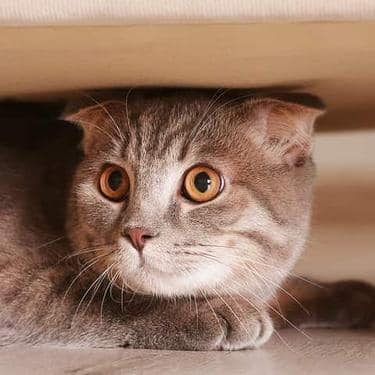 Keeping Pets Calm During Thunderstorms
Keeping Pets Calm During ThunderstormsIs your dog scared of thunder? Does your kitty dart under the bed at the first rumble? Learn a few tips for keeping your pets calm during the storm.
Read More Moving With a Pet: A How-To Guide
Moving With a Pet: A How-To GuideDiscover helpful tips for moving with your pet including safety recommendations to keep in mind on moving day & pet behavior to watch for at your new home.
Read More -


Cat lovers may wonder who wouldn't want to spend their lives around cats. Some people choose not to hang out with cats, but others have a real fear of cats, called ailurophobia.
A fear of cats is categorized as a "specific" phobia, the fear of a specific object, place or situation like an animal, germs or heights, according to the Anxiety and Depression Association of America. Specific phobias can affect peoples' lives on all levels of the spectrum, from slight to extreme.
Origins of Cat Phobia
The fear of cats can develop from a traumatic incident such as being attacked by a cat, but the condition is also psychological in nature. Specific phobias tend to develop between the ages of 7 and 11, though they can form at any age, according to Psycom.
Symptoms of Cat Phobia
Cat phobia presents itself in much the same way as other specific phobias. As the Mayo Clinic described, symptoms may include:
- Intense fear and anxiety when near or thinking about a cat
- Awareness that the fear is irrational but feeling powerless over it
- Increasing anxiety when getting closer to a cat
- Avoiding cats whenever possible
- Experiencing physical reactions, including sweating, difficulty breathing, dizziness and rapid heartbeat
- Children with phobias may cry or cling to their parents
People with ailurophobia can fall into two camps. In an interview with Britain's Your Cat magazine, psychology professor Dr. Martin Antony explained that "the underlying concern differs across cat phobic individuals. For some it is a fear of harm (for example, being attacked, scratched, etc.). For others, it may be more of a disgust reaction." The potential severity of ailurophobia affects a person's life in various ways.
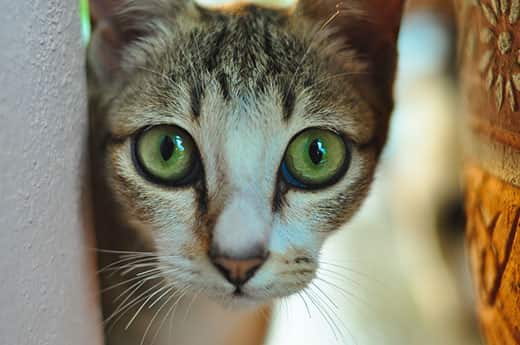
What you may see as weird but harmless cat conduct, such as running across the room for no reason, may be seen as threatening to people who fear cats. Subjects interviewed for the Your Cat article said they're terrified of the unpredictability of a cat's movement (jumping, leaping, scratching) and feel physically overwhelmed by the thought of ingesting cat hair, so much so that they check utensils, glasses, and other items before using them.


Tasty Tips
Coping With Cat Phobia
While there is no "cure" for ailurophobia, there are ways to manage it constructively. Psychiatrist Dr. Fredric Neuman noted in Psychology Today that animal phobias, though easier to treat than other types of phobias, can be severe. Treatment for animal phobias includes the following, said Dr. Neuman:
- Reading about the animal
- Playing with toy animals (for children and adults)
- Observing the animal from a distance
- Learning how to handle the animal
- Touching the animal (if possible) with supervision
In severe cases, ailurophobics cannot have cats in their line of sight (for example, seeing a cat strolling around the room) because it causes severe anxiety. It can take many months or even years to overcome cat phobia, usually with the help of exposure therapy and cognitive behavior therapy.
How to Help Those with Ailurophobia
If someone you know has ailurophobia, you can help by acknowledging their fear of your feline friend. One way to do this is to talk about a cat's body language and what different cat-specific movements mean.
And it's no coincidence that kitties tend to approach the non-cat-lover in the room. As opposed to someone who tries to interact with your fur baby, Cat-World Australia said, "the visitor who doesn't like cats quietly sits down avoids all eye contact with the cat and hopes the cat will stay away. He is behaving in such a way that is viewed as non-threatening towards the cat." This is why your cat heads straight for the quiet person. You may have to put your cat in another room while your ailurophobic friend is visiting, or hang out together at a location other than your home.
With patience and understanding, you can help the people in your life manage their fear of cats.


Christine O'Brien is a writer, mom, and long-time cat parent whose two Russian Blues rule the house. Her work also appears in Care.com, What to Expect, and Fit Pregnancy, where she writes about pets, pregnancy, and family life. Find and follow her on Instagram and Twitter @brovelliobrien.
Related products

Improves Everyday Ability to Get Up & Go

Supports energy level and beautiful fur in mature cats

Natural fiber to help comfortably reduce hairballs

Over 70% of dogs lost weight within 10 weeks when fed this nutrition (USA Study)
Related articles
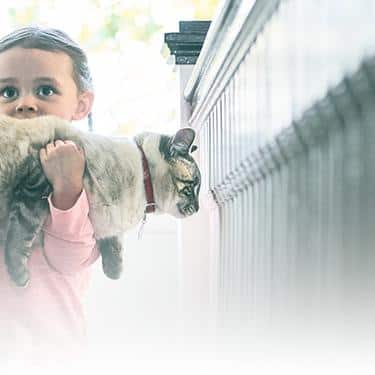
Discover how to identify cat sensitive skin and what you can do to help your cat thrive from head to paw.
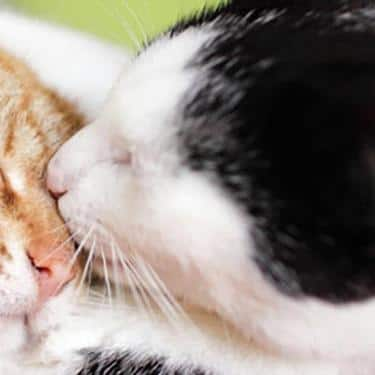
Learn the different factors that might be contributing to your cat's weight gain, and how bigger doesn't always mean better.
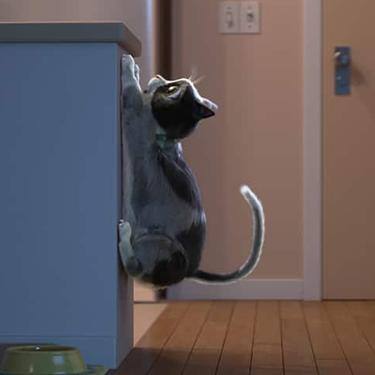
What is the best food for an overweight cat? Learn all about weight control food for cats, including what's in it and how it works.
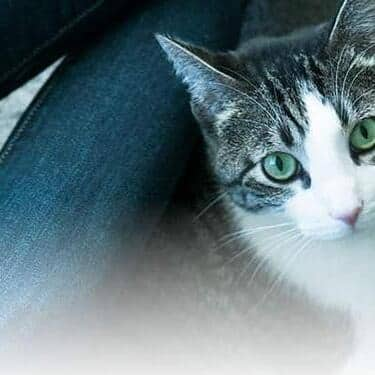
Brushing your cat's teeth is just as important as brushing your own. Learn signs or oral health problems in your cat and how to avoid them.
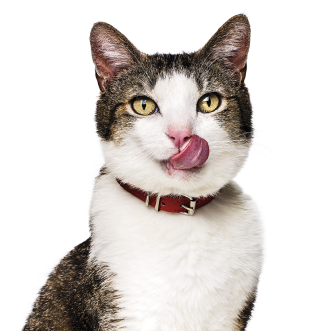
Put your cat on a diet without them knowing
Our low calorie formula helps you control your cat's weight. It's packed with high-quality protein for building lean muscles, and made with purposeful ingredients for a flavorful, nutritious meal. Clinically proven antioxidants, Vitamin C+E, help promote a healthy immune system.
Put your cat on a diet without them knowing
Our low calorie formula helps you control your cat's weight. It's packed with high-quality protein for building lean muscles, and made with purposeful ingredients for a flavorful, nutritious meal. Clinically proven antioxidants, Vitamin C+E, help promote a healthy immune system.

